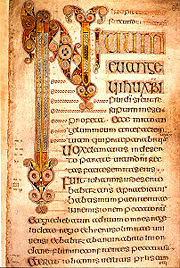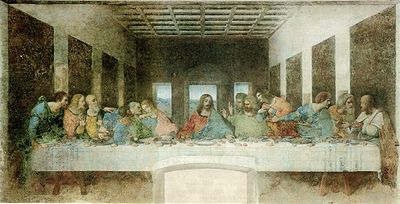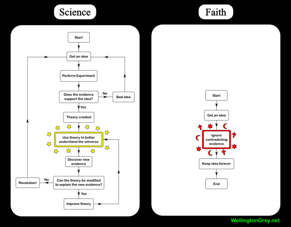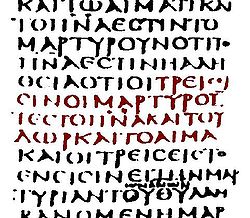Military equality
Dear President Obama,
It's time to end "don't ask, don't tell" and let openly gay people serve in our military.
TMBG @ JJ 2009
We took Emma and a friend to the 2nd annual Jiggle Jam, a children's music festival headlined by They Might Be Giants. TMBG has been one of my favorite bands for over a decade and it's been great to see them expand into children's music. They've released three records for kids and the music is very good. Our whole family enjoys it. This was my 4th time seeing the band live, Sara's 3rd and Emma's 2nd. They were excellent as always. They even played a song from their next children's album, Here Comes Science, due out in September.
We had a great day. You can see some more pictures here. (I finally got around to updating the theme of my photo gallery to match the rest of my site.)
Emma's Latest Movie
I showed Emma how to use iStopMotion. She animated a short film and then we recorded some piano music for the soundtrack. Here's the finished product:
Emma's Piano Recital
Emma started piano lessons back in September. She has learned a lot in 8 months. This video is from her recital today:
[youtube]UuOFaVmsqG8[/youtube]
Alternatives to Faith
I asked my readers to offer their definitions of the word faith. I'd like to stir together their thoughts along with the definitions provided in the dictionary and the Bible, adding a dash of my own opinion and boiling it down into a concise, simple working definition for faith.
Here are some of the things my readers said:
- Faith is to believe in something when everything else around is saying there is no possible way.
- Faith is living in a reality that has not yet come and by proof that isn't testable.
- Believing in something that can't be proven to be true.
Dictionary.com has: "Belief that is not based on proof."
The Bible, in Hebrews 11:1, says: "Now faith is being sure of what we hope for and certain of what we do not see."
Here's my summary of all of these definitions:
Certainty without evidence.
There are other definitions for the word faith, but I am responding to this specific one. This is the type of faith people refer to when I ask them questions and point out the lack of evidence for their religion and they tell me that I just need to have faith.
Faith is usually invoked only for questions to which the evidence does not give a clear answer. It doesn't sound quite right to say, "I have faith that water boils at 100°C." We can settle that question with a simple experiment. But faith is likely to come up for harder questions like
- How did the universe begin?
- How did life begin?
- What is the purpose of life?
- What is the source of our shared moral values?
- What happens to our consciousness after we die?
Faith allows people to have certainty in the answers they give to these questions. It feels nice to be certain, but if that certainty is misplaced, it can be harmful. Here are some alternatives to faith: The facts, uncertainty and inquiry.

1. The facts
In some cases, faith is applied to a question that has already been answered. In the years before the germ theory of disease and the discovery of bacteria, many explanations were put forward for why people got sick. One idea was that evil spirits can inhabit a body and make a person sick. This idea is even present in the New Testament. Now we know that diseases are caused by bacteria, viruses and malfunctions within the body. Some people still believe that some health problems are caused by evil spirits, but most of us recognize that faith is not a good approach to the question of disease. Rather than having certainty without evidence we can look at the facts and put our confidence in the explanations that are backed by evidence. We still don't know everything about disease, but we know enough to see that facts, when available, are better than faith.
We should all heed Augustine's warning and be careful not to put faith in an idea that is plainly contradicted by the facts.

2. Uncertainty
For some questions, the jury is still out. When we look at the facts, we find that we can't give a confident answer backed up by evidence. Faith allows one to have confidence in an answer that is not backed up by evidence. Is this type of faith-based answer better than no answer at all? I contend that it is not. I think it is better to humbly acknowledge our uncertainty than to put our confidence in speculation. When we don't know, let's just say "I don't know." To put it another way, confidence in an idea should be proportional to the evidence.
Take the origin of the universe as an example. Despite the best efforts of science, we still don't know exactly how the universe came into being. What existed before the Big Bang? What triggered the event? Scientists don't know and may never know. Faith allows people to confidently answer that a god created the universe, but how useful is that? If anything, it brings up more questions than it answers (where did this god come from?). I think it's better to say "I don't know" than to have certainty in an explanation with no evidence. We might find this certainty comforting, but it's a false comfort. And if it prevents us from looking for real answers, then it may cause more harm than good.
3. Inquiry
Once we acknowledge our uncertainty, it's possible to begin an inquiry. Faith, on the other hand, hampers inquiry. If you have certainty in an answer, you won't bother looking for a better answer. This is why creationism (even when rebranded as "intelligent design") is so maddening to those of us who support science. Once someone buys into the idea that a god created each species individually, they won't be interested in or open to the scientific inquiry that is uncovering real answers.
Science is a type of systematic inquiry. The first step is to make a guess (hypothesis) about how something works. The next step is to carefully perform experiments and gather data to see if the facts confirm or contradict the hypothesis. A well-designed scientific inquiry can be repeated by other scientists and should give them the same results. Only after all of these steps, can the scientists draw conclusions with any confidence. And even then those conclusions are subject to revision if someone uncovers contradicting evidence. It won't do to make a hypothesis, convince yourself that it is 100% certain and then ignore all contradicting evidence. That's bad science. But that is exactly how faith works.
Faith also begins with a guess. But then it skips all the other steps and jumps straight to certainty. The main support for faith comes not from facts, but from stories, traditions, rewards and punishments. Someone comes up with the idea that a sound of thunder is caused by Thor slamming his hammer against the mountains. He tells stories about why Thor is doing this and those are incorporated into ceremonies to appease the god. Those who believe in the stories and follow the traditions are promised that the deity will watch out for them and reward them after they die. Doubters are threatened with temporal and eternal punishment. It's impossible to discover the real answer without first giving up our certainty in the imaginary answer. Faith has to be replaced with uncertainty and then inquiry. If the faith answer is really true, then a rigorous inquiry will confirm that. We have nothing to lose by giving up faith.
Faith, as I defined it above, can and should be replaced with facts, uncertainty and inquiry. We will lose a little comforting certainty, but we will gain a universe full of amazing, surprising and useful facts. There will still be mysteries to solve and goals to strive for. We will find that reality is more awe-inspiring than anything imagined by faith.
Faith and wishful thinking
I'm still working on an article about faith, but I wanted to bounce another idea off of my readers. What is the relationship between faith and wishful thinking? The Bible says that faith is "the evidence of things hoped for." Certainly many of the central tenets of Christian faith are things that people wish were true:
Your consciousness will survive the death of your body.
There's someone in control looking out for you.
The injustices of the world will be made right.
You don't have to take the blame for the bad things you've done.
Of all the religions in the world, yours is the right one.
There are several aspects of Christianity that people may not wish to be true (hell, for example), but I think they are outweighed by the items above. If faith does have an element of wishful thinking, that doesn't mean it's not true. But it does supply a motive for people to buy into unproven ideas.
What is faith?
I'd like to do some writing, thinking and discussing about the subject of faith. I have some ideas about it, but I'd like to hear from you, so here are some questions to get things started:
1. What is faith? How do you define the word?
2. Is it a good thing or a bad thing? In all situations or just some?
3. Does your answer to #2 hold true for people with faiths other than your own?
4. How do you decide what to have faith in?
6 Passages That Weren't in the Original New Testament
The printing press was invented in 1439, so for the first 1400 years of Christianity all of the books were copied by hand. For the first 300 years, that work was done by literate church leaders rather than by a class of professional scribes and monks as was the case later on. The same Christians that were preserving and copying the texts that became the New Testament were also embroiled in several theological debates. We now know, based on comparisons of the surviving manuscripts from the history of the Church, that those early copyists made changes to the text. Most of those changes were minor mistakes like spelling, word order, skipping a line or just a simple misreading. But in some cases, entire verses or passages were inserted by the scribes to bring the text in line with their theological views and to bolster their position in the debates of the day.
1. Mark 16:9-20

What it says
Our most reliable early manuscripts of the Gospel of Mark end with Mark 16:8, which says that some women discovered the empty tomb of Jesus, but never mentioned it to anyone. This may have been all there was to the story when the Gospel of Mark was written, but when church leaders were copying this book more than a century after it was written, this abrupt ending must not have seemed right to them. So, they added some post-resurrection appearance stories and a commission from Jesus calling people to be baptized, speak in tongues, heal people and handle deadly snakes without being harmed.
Why they changed it
By the time this passage was added, the other Gospels with their post-resurrection appearances and ascension accounts were well-known throughout the early church. The abrupt and unimpressive ending of Mark may have been a source of embarrassment for the church. It served as a record of the changes that had already been made to the stories about Jesus. The addition of this ending brought Mark in line with the other Gospels and smoothed over this inconsistency. (I also discussed the ending of Mark here.)
2. John 7:53-8:11

What it says
This passage contains the story of the woman caught in adultery. It is the source of the iconic phrase "Let he who is without sin cast the first stone." Although it is a charming story about grace and forgiveness, the textual evidence suggests that this passage was not in the original version of the Gospel of John.
Why they added it
There's no obvious reason for the insertion of this story. It may have simply been a part of the oral tradition about Jesus that was added to the margin of a manuscript by a scribe and inserted into the text by a later scribe. Interestingly, we have manuscripts that insert this story at different points in the Gospel of John. One scribe even stuck this story into the book of Luke. Most modern translations include this passage but label it as a later addition. If you see the Bible as a book written by a perfect God and transmitted by fallible humans, then you must discard this passage as a human invention, which is a shame because it teaches a nice lesson.
3. John 21
What it says
John 20 ends with what looks like a closing statement:
Jesus did many other miraculous signs in the presence of his disciples, which are not recorded in this book. But these are written that you may believe that Jesus is the Christ, the Son of God, and that by believing you may have life in his name.
 John 21 seems like it was tacked on to an already finished book, but there are no surviving manuscripts that omit John 21. So, the only evidence that this passage was added by a scribe is the internal evidence of the text itself. If it is an addition, that would help make sense of John 21:24 which speaks of the author of the book in the third person.
John 21 seems like it was tacked on to an already finished book, but there are no surviving manuscripts that omit John 21. So, the only evidence that this passage was added by a scribe is the internal evidence of the text itself. If it is an addition, that would help make sense of John 21:24 which speaks of the author of the book in the third person.
Why they added it
This chapter includes the reinstatement of Peter, who had denied Jesus a few chapters earlier. This addition resolves that story line. Perhaps some early scribe listed an example of those "many other miraculous signs" after the end of the book (borrowing a story from Luke 5:1-11) and the next scribe copied that section as if it were part of the text. But if that happened, it was already done before our oldest manuscripts of the Gospel of John.
4. Luke 22:17-21
What it says
Here is the passage as it appears in the NIV, with the added passage in bold:
After taking the cup, he gave thanks and said, "Take this and divide it among you. For I tell you I will not drink again of the fruit of the vine until the kingdom of God comes." And he took bread, gave thanks and broke it, and gave it to them, saying, "This is my body given for you; do this in remembrance of me." In the same way, after the supper he took the cup, saying, "This cup is the new covenant in my blood, which is poured out for you. But the hand of him who is going to betray me is with mine on the table.

Why they added it
One of the theological debates that raged in the early church was about the meaning of the death of Jesus. Each Gospel has its own perspective on the significance of that central event, and each of those views had its defenders in the early church. Outside of this passage, the Gospel of Luke describes the death of Jesus as a miscarriage of justice and an occasion for repentance, but not as a sacrifice for sins. The addition of these lines to the text serves to bring Luke into agreement with what became the Orthodox view of the death of Jesus. The language that was employed here is very similar to what's found in 1 Corinthians 11:23-26.
5. Luke 22:43-44

What it says
An angel from heaven appeared to him and strengthened him. And being in anguish, he prayed more earnestly, and his sweat was like drops of blood falling to the ground.
Why they added it
In the Gospel of Luke, Jesus is always calm and collected, never letting his emotions get the best of him. Although several of his stories were copied (almost) word for word from Mark, the author of Luke always left out the parts that showed Jesus getting angry or upset. These two verses interrupt the flow of the passage, they don't fit in with Luke's usual portrayal of Jesus and they are not present in our earliest copies of the text. But why would this be added?
One of the theological controversies in the first few centuries of the church surrounded the question of who Jesus was. Was he a man? Was he God? Was he both? All three of these views were present in the early church. The latter ultimately won out and the other views were declared to be heresy. Luke was the gospel of choice for those who said that Jesus was a divine being who only appeared to be human. Some scribe inserted this passage so that Luke, like the other Gospels, attributed human emotions to Jesus.
6. 1 John 5:7-8
What it says
For there are three that bear record in heaven, the Father, the Word, and the Holy Ghost: and these three are one.
And there are three that bear witness in earth, the Spirit, and the water, and the blood: and these three agree in one. (KJV)
Why they changed it
The first line of this passage is not present in any manuscripts produced before the 16th century. All Bible scholars now recognize that this passage was inserted to improve the case for the doctrine of the Trinity, which is not clearly stated in the Bible outside of this added passage. Most translations of the Bible now omit the added passage or relegate it to a footnote. The King James version includes this passage because it was translated from late and unreliable Greek manuscripts.
Why it matters
Textual criticism is the field of study that attempts to discover what the original version of the Bible said. This is especially important for Christians who believe that the New Testament was inspired by God. If some passages were added or altered by human scribes, then those must be discovered and stripped away so we can get closer to the original text. But those changes also tell us something about the early church leaders. Many of them did not see the New Testament as an immutable document delivered from God, but as a text that could be changed to bring it in line with official church doctrine.
Perhaps you see these as a minor changes that don't affect the central message of the New Testament. I wouldn't consider the identity of Jesus, the doctrine of the Trinity and the meaning of the death of Jesus to be minor issues. But there is another, bigger problem with brushing these changes aside. They are probably only the tip of the iceberg. The oldest surviving copies of several books in the New Testament were made over 100 years after the original text was written. There may have been very significant changes to the text during that interval, but in the absence of manuscripts we don't know what they were (unless we rely on internal evidence as in the discussion of John 21 above). There's no reason to think that the copyists of the first 100 years were any more shy about making changes than the copyists of the next 300 years.
The changes that we know about show that even if the original books of the New Testament were inspired by a god, they were not miraculously preserved. That job fell to humans who introduced thousands of unintentional and intentional changes. So, even if you can come to terms with the changes I've listed above, you must also face the possibility that there are many more changes that we will never discover. And if the scribes were willing to make changes, then the Gospel authors probably were, too. In fact, we can see that Matthew and Luke took passages from Mark and made changes to them.
There are a lot of good ideas and stories in the New Testament, but I don't see how anyone can view it as a perfect book without disregarding loads of evidence.
(Much of the information for this post came from Misquoting Jesus by Bart Ehrman. It's a good introduction to textual criticism.)
City council
Tonight I was sworn in as an Adrian city councilman. The mayor resigned a few months ago and one of the aldermen was acting as mayor. The council decided to appoint him as mayor and they needed someone to serve the rest of the alderman's term (about 14 months). I volunteered and the council appointed me. I went to every council meeting for around a year when I was helping out at the newspaper. I got familiar with the issues they were dealing with and became interested in the process.
Adrian is a town of around 2000 people and it's growing at a healthy pace. We're in the middle of building a new water plant. The city also owns a nursing home. This town has always been my home and probably always will be. It's a great place to live. I love it and I want it to succeed. I'm looking forward to serving.
Before you forward that email
 If you get an email forward that seems too amazing, frightening, sad or heartwarming to be true, it probably is. Before you hit that button to forward the message to your friends, take 60 seconds and type the subject line into Google. You can also throw in a word like "snopes," "hoax" or "chain letter." There's a good chance that the story in the email was made up and you don't want to forward a story that claims to be true but isn't, do you?
If you get an email forward that seems too amazing, frightening, sad or heartwarming to be true, it probably is. Before you hit that button to forward the message to your friends, take 60 seconds and type the subject line into Google. You can also throw in a word like "snopes," "hoax" or "chain letter." There's a good chance that the story in the email was made up and you don't want to forward a story that claims to be true but isn't, do you?
There are several sites dedicated to debunking fictional chain letters and other internet rumors. If you run a Google search about the email, one of these sites is often the number one result.
Don't believe everything you read.




Recent comments